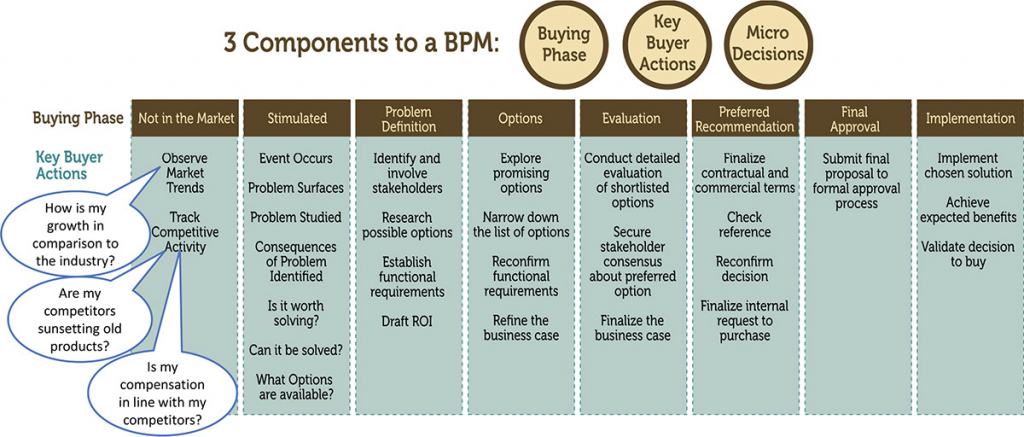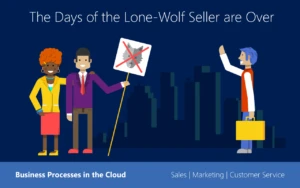Map Your Buyer’s Journey to Hit Your Sales Goal
Current research conducted by SBI has revealed a fundamental shift in behavior that is the result of a new breed of buyer. The new buyer is well informed, technology enabled, saturated with media, and suffering from information overload. As a result, she does not have the time or the desire to meet with sales people. Therefore, she self-directs her educational process in search of a solution to her problem. That has changed the buyer’s journey. If you want to hit your sales goal, you need to ask yourself the following questions…
Why do my customers buy? What drives their buying behavior? When do they make their decision to purchase? These questions are the Holy Grail of sales and marketing. Answer them and you’re on your way to a great year. You can start now by mapping the buyer’s journey. This is priority #1 if you want to hit your sales goal.
What is a Buying Process Map?
A Buying Process Map (BPM) is a sales tool that maps the decision making process used to purchase a product, service or solution. It provides a sales team a blueprint so they can get into deals early enough to win them. The use of a BPM means that the buyer and seller are completely aligned. This results in the elimination of blown opportunities.
What is the benefit of using a Buying Process Map?
A win loss analysis likely shows you that you are winning somewhere between 20 and 40% of your later stage deals. That means 60 to 80% of them are lost. You are either losing to your competition or you are losing to no decision, meaning the buyer never even made a purchase decision. If you use a Buying Process Map, you are going to win more of those deals.
Leading sellers create reasons why buyers want to meet with them. If sellers successfully get in early, the competition is not going to be able to. A BPM can be used to win a deal before the competitors even know there is a deal. This is the benefit of using a Buying Process Map. Also, having a BPM is the first step to creating a world class sales process. Buyers reward sellers with the order when sellers engage the way the buyer wants to buy.
Above is a BPM Prototype. When SBI studied top producing sales organizations, we found there were three components to a BPM:
- The Buying Phases
- Key Buyer Actions
- Micro Questions.
To learn more about the 3 components and dive deeper into BPM’s, sign up for SBI’s 7thAnnual Sales & Marketing Research Review here. You will get access to the full research, guides and tools on how top sales organizations are using these BPM’s. Here you will see why BPM’s realize 37% higher win rates, 26% higher average deal size and 47% fewer competitors involved each deal.
Final Note:
The key to success with buying process maps is to not create a generic BPM and spread it across the entire organization. You need multiple BPMs to account for how different buyers buy. Typically they vary by the following dimensions:
- By segment – Buyers buy differently by industry.
- By product – Buyers buy different products, services and solutions in different ways.
- By persona – Buyers involved in the decision making process have different needs and therefore make purchase decisions differently.
- By geography – Buyers in the US buy differently than those in EMEA, APJ, and LATAM.
Once you have defined how many buyers you have, you can begin research to create BPMs. With a BPM in place, your organization can build a custom sales process mapped directly to the BPM. This will result in higher close rates and reduced cycle times. Schedule a free session with one of SBI’s experts here to get first hand access to this research. Start now before the FY2014 sales year and you’ll crush next year’s number.
If you would like to download a copy of our recent research and learn more about the latest release of Microsoft Dynamics CRM 2013, please register for the Global Premiere Event, live from Barcelona, November 4th. Register today!



